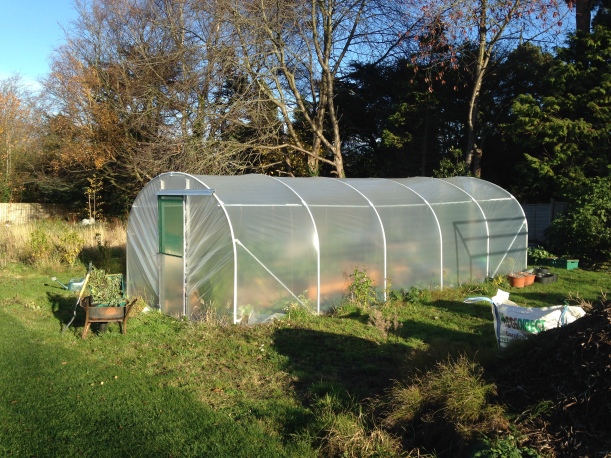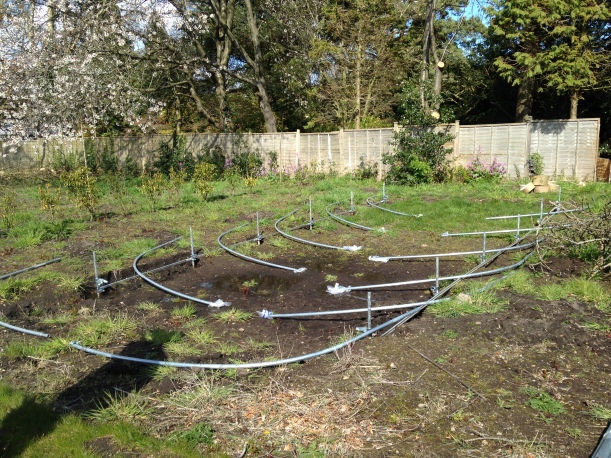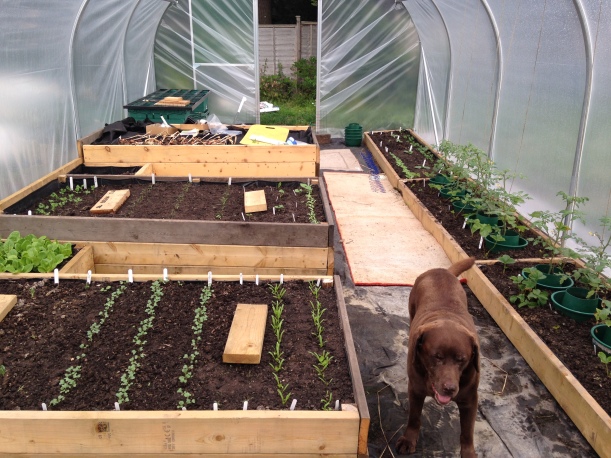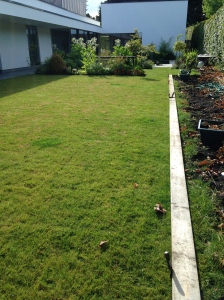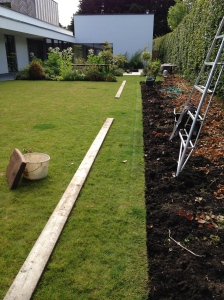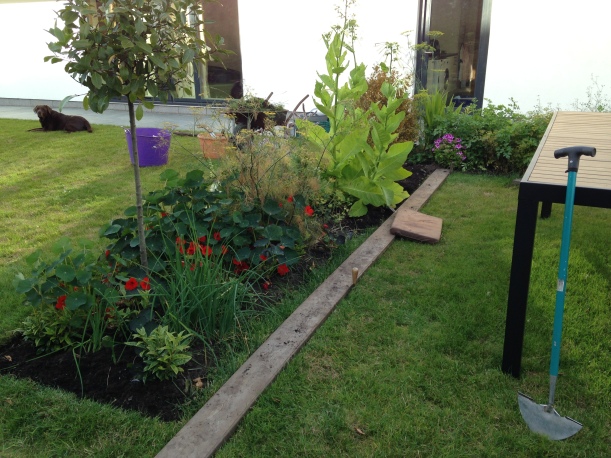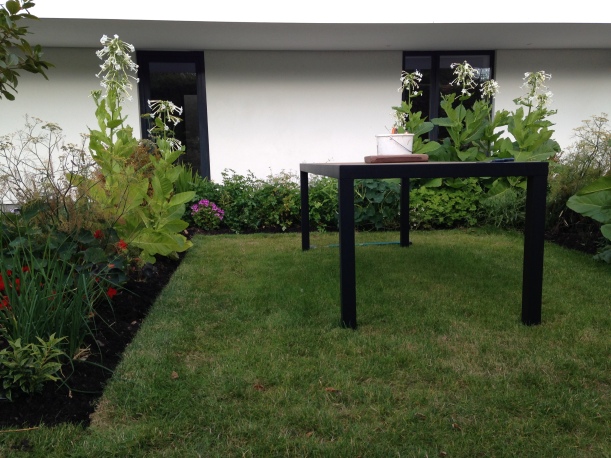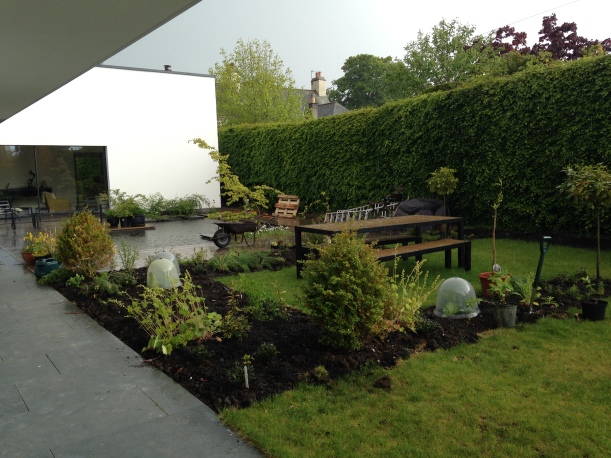I’m afraid my robust stance on what NOT to get gardeners has not softened in the intervening two years. If anything, I have become more set in my ways. Here is a list of stocking fillers, all of them under fifteen quid, that any keen gardener would be very pleased to get.
- Jumbo kneeler
Yes, those ads in the back of Sunday supplements are accurate: garden kneelers are useful. No, not those leather/chintz/Harris tweed covered ones, aspirational and pretty though they be. They all share the same fault: way too small, with only space for your knees side by side. If there’s something just out of reach, you have to get to your feet, move the kneeler 20cm and then get back down again, which over the course of a even a few minute’s gardening becomes irritating (even for those less prone to irritation than myself). I wound up never using mine, unless it was really cold and wet underknee. Then, clearing out my father’s toolshed earlier this year, I came across a giant, garishly coloured slab of foam: a vastly outsized kneeler. I commandeered it, brought it back with me to Scotland and have used it almost every day since. The kneeler I suggest you buy is even larger than my own, at a wildly generous 98cm by 39cm, and is truly a brilliant present for any gardener. Its only downside is that it won’t actually fit in the stocking.At £10.95 from Harrod Horticultural
- Blade sharpening kit
This duo from Darlac is brilliant. I have a similar little steel that I have to hand – so useful for a mid pruning-session sharpen of the secateurs. And if you wanted to bowl your recipient over with your thoughtfulness, you could bung in a can of WD40, a couple of Brillo pads and possibly even a rag. Pop the lot in a shoebox and that’ll keep your gardener happily occupied through the bleak January days, productively sharpening every blade in the shed in keen anticipation of the coming spring.At £12.99 from Two Wests & Elliott
- Plant rings
These little plastic coated wire rings are incredibly useful. I never throw them away, they last forever, and you can use them again and again. I always have a few in my pocket for when I notice that something has flopped away from its support or the twine has broken – or the plant has grown and the point at which it needs attached has changed – and I don’t want to go back to the shed and get the full works. I use them to to secure tomato and cucumber plants to bamboo canes, to train the young branches of trees, to secure delphinium spikes onto canes, to train my climbers to their wires. I realise that as presents go they lack a certain wow factor, but you can’t have everything.At £1.99 from Kingfisher, available from all garden centres and Amazon
- Proper gardening gloves
Be suspicious of gardening gloves that look pretty. A gardening glove should have a purpose: it is either a leathery gauntlet to protect your hands from being scratched by thorns, irritated by sap or burnt by fire; or designed to keep soil particles away from your skin and nails. I do not subscribe to the view that true gardeners love to feel the soil with their bare hands. When I see presenters on Gardeners World plunging their ungloved hands into the earth I physically shudder at the memory of running microscopically roughened hands over fabric and the unpleasant snagging sensation that ensues. So for standard garden work use these from Showa, and for anything requiring greater precision use these medical latex or vinyl ones. As well as also coming in very useful for kitchen use when chillis need chopped, you can snap them at the wrists as you put them on and waggle your eyebrows suggestively. That may be just in our household though.At £3.10 a pair from Just Work Gloves and others
From £3.60 for a box of 100 gloves from Just Gloves
- Decent hand scrub
My father, who started out as an engineering apprentice, swore by Swarfega, and always had a pot or ten about the house. I swear by Jo Malone’s Geranium and Walnut Scrub, but let’s face it, no way is that one going to meet the £15 criterion of this list. However, a genuinely good alternative that does is the Gardener’s Hand Scrub from Nutscene (also containing geranium), which is a delight to use and smells lovely. Don’t wet your hands first: all three scrubs work (and feel) best when applied to dry hands, slowly massaged into the palms, backs of hands and fingers, then rinsed off with tepid water. Nutscene makes an equally good accompanying hand cream – I’m quite picky about products (but you already knew that) and I rate it.From £7.63 a 500ml pot, from Amazon
At £40 for 200g from Jo Malone
At £8.99 for 150ml from Nutscene
- Seed Voucher
That thing about sitting by the fire when it’s lashing down outside, poring over seed catalogues? Never happened to me, I do my seed salivating in the evenings in front of my computer, but it doesn’t diminish the joy in knowing you have a voucher with an interesting seed company and you get to choose whatever you like. Free seeds, hurrah! You could get six or seven packets for a £15 voucher, and the firm will send you their list or catalogue too if you like. You cannot go wrong with a voucher from any of the following:Chiltern Seeds
Special Plants
Franchi Seeds of Italy
Real Seeds
- Thermometers
I’m going to recommend two types of garden thermometer, both of which I use (indeed I have two of each type and can always use more). Digital examples of both do exist, but I haven’t yet tried them so I can’t comment firsthand. The first type is a straightforward soil thermometer, robust and with a bright red ball on the top which means that when you lose it under the rush of spring growth, come autumn you stand a good chance of finding it again. Thanks entirely to this attribute, I’ve had my current one for over 15 years and three gardens.
The second type is a minimum/maximum temperature recorder. I have one in my polytunnel and one outside so that I can nerdily compare the difference. Even more nerdily, I then record the temperatures in my garden notebook (see next item on the list).At £12.99 and £14.99 respectively, both from Two Wests & Elliott
- Garden Notebook
See previous point. Any committed gardener needs a notebook, for all sorts of valid and not at all nerdish reasons. I jot down what I sowed and when, garden ideas, to do lists, plant wish lists and planting combination ideas. It is a calamity to visit another garden without a notebook, because the back of a scrap of paper jottings you make will inevitably be lost or put through the wash. My favourites are medium-sized lined hardback notebooks that stay in the polytunnel or shed, and smaller unlined ones that can be slipped into a pocket when out visiting. Both from Moleskine.
*** I am positively giddy with excitement having just learnt that for an additional £5 you can have your notebook personalised with your name or the name of your garden. “Gray House Garden. 2017” Deep breaths.***From £10.95 from Moleskine
- Root trainers
These are the bee’s knees for sowing individual medium sized seeds like sweet peas or sweetcorn (broad beans are just a tad too large), or for propagating cuttings. As well as encouraging excellent root development, you can open up the sleeve without disturbing the roots to see how things are doing. After a number of uses the plastic sleeves do start to rip, but I’ve kept mine going for years.At £10.95 (currently £6.99, you could get two sets!) by Haxnicks from Amazon
- Pot of indoor bulbs
Yes yes, I know I should have ordered my bulbs for forcing in September when I did my annual tulip order, but I was so profligate with the tulips and lilies that I had to cut something, and that’s what went. And now I am forced to buy my hyacinths and amaryllis in pots, already in growth (and I’m noticing that once you allow for the pot and the time, there’s not that much in it, pricewise). There is something so utterly cheering for the gardener about spring bulbs, tangible proof that spring and summer will come again. Any supermarket will have those baskets of three hyacinths – white or blue please, not pink, and none of your sparkly ‘decorations’ thank you very much – but M&S are doing a particularly charming range of muscari in little milk jugs which I think must be instore only, because I can’t find them online. Three of those would be just dandy.
Whatever you choose to get the gardener in your life, I wish you and them a very happy Christmas and a lovely start to the eagerly awaited new year. Come on 2017!



